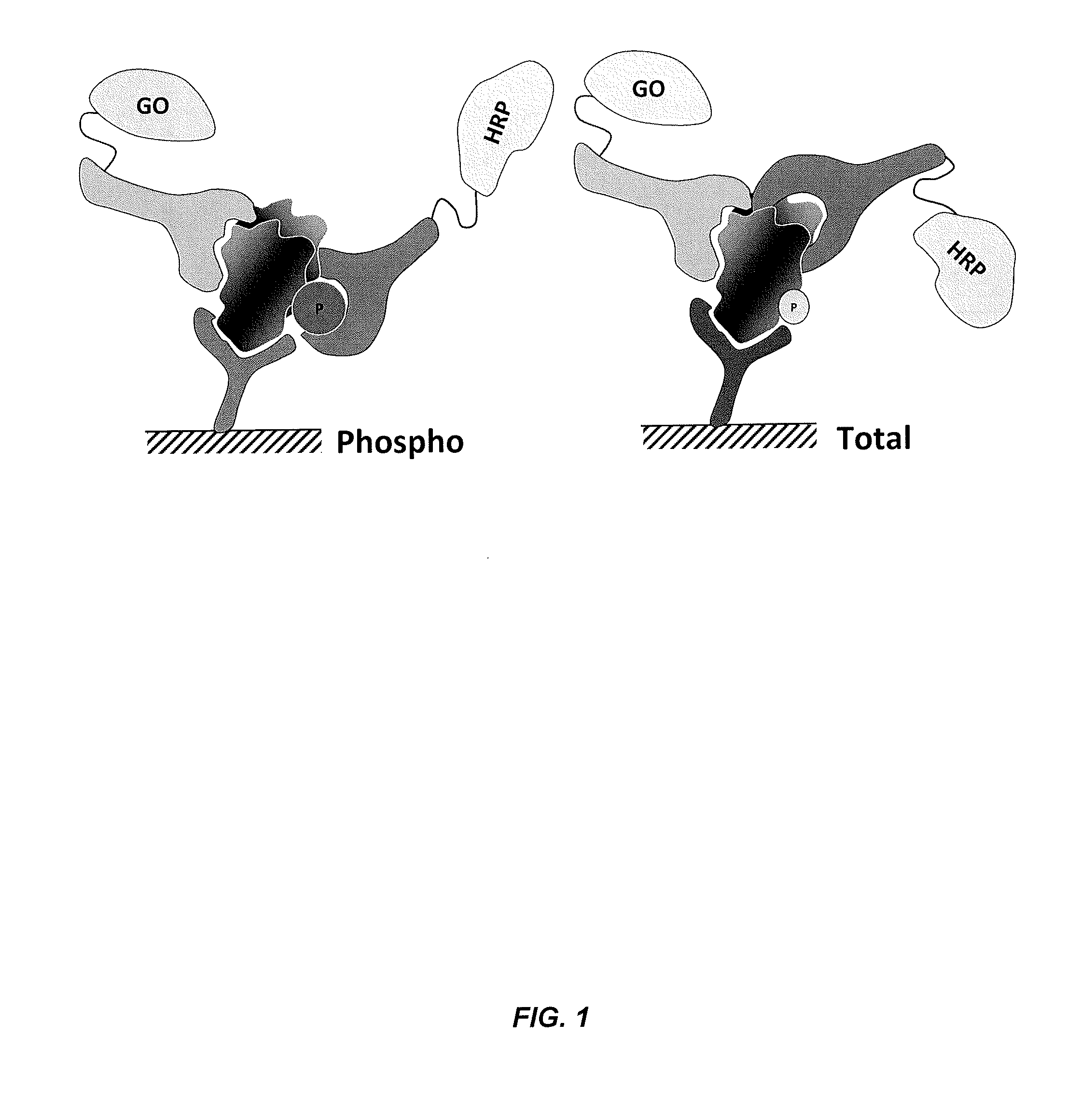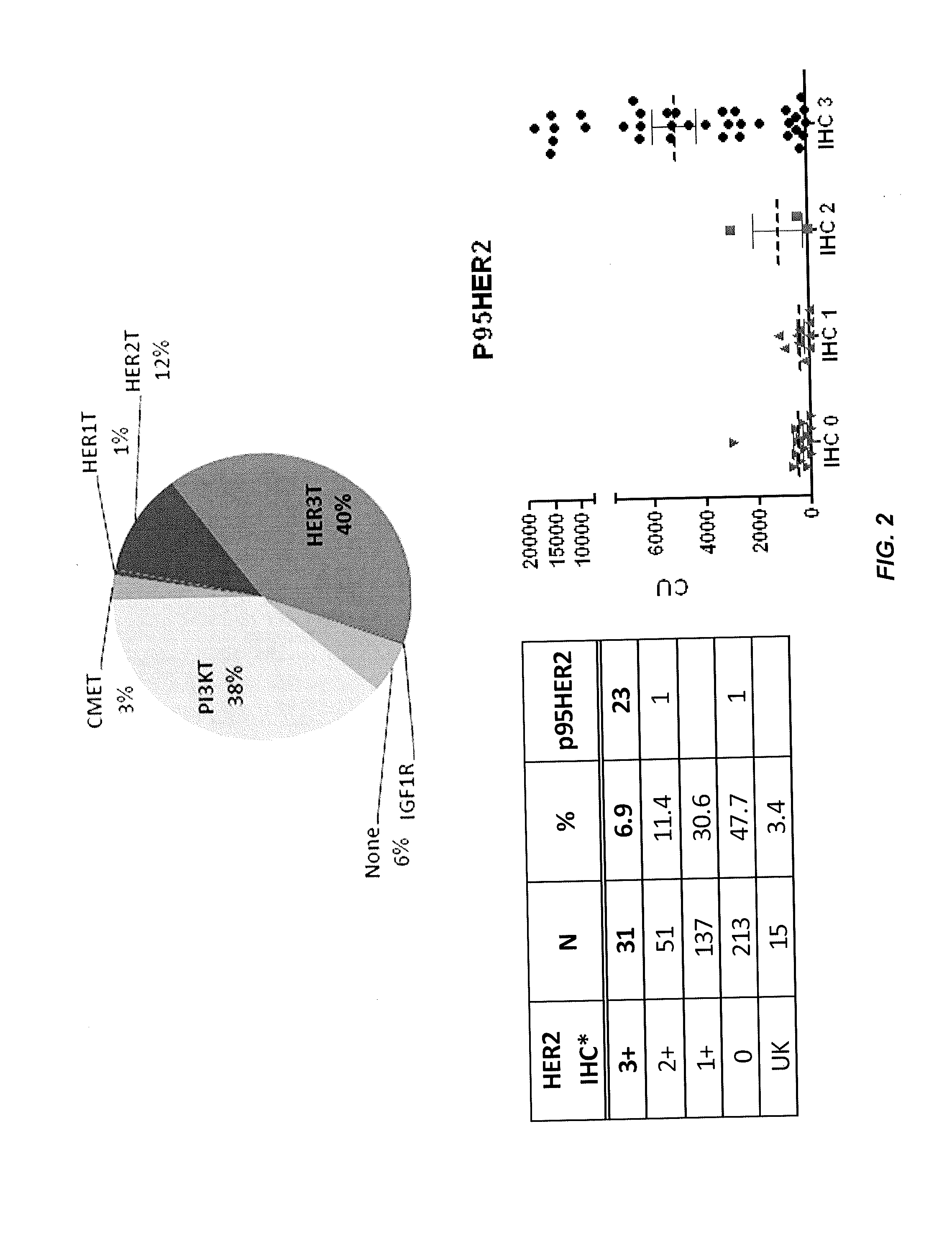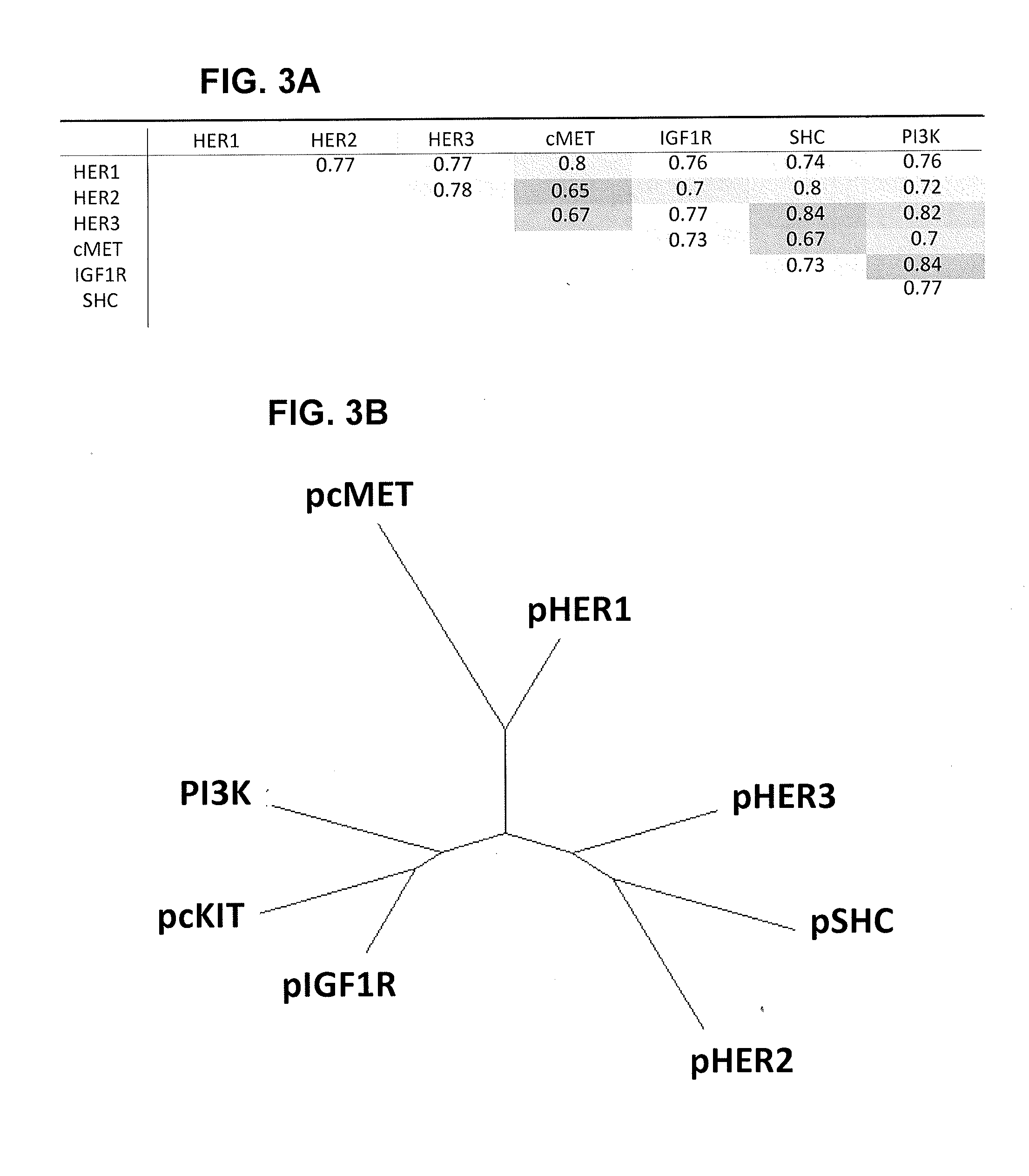Methods for predicting and improving the survival of gastric cancer patients
a gastric cancer and survival prediction technology, applied in the field of gastric cancer survival prediction and improvement, can solve the problems of limiting the anti-tumor efficacy of monotherapy targeted against a single rtk, and achieve the effects of improving survival, improving prognosis, and improving disease-free survival
- Summary
- Abstract
- Description
- Claims
- Application Information
AI Technical Summary
Benefits of technology
Problems solved by technology
Method used
Image
Examples
example 1
Functional Profiling of Multiple Signal Pathway Proteins in Gastric Cancer Patients
Abstract
[0269]Although gastrectomy is the only curative treatment in gastric cancer (GCA) patients, a high recurrence rate ranging from 40˜60% following curative surgery still accounts for poor overall survival. In order to further improve survival, there is an urgent need to identify reliable molecular prognostic markers for survival or recurrence following adjuvant chemoradiation therapy, which will evolve to the development of patient-tailored treatment strategies. Hence, we have developed a multiplexed immunoassay platform for functional profiling of the signal transduction pathway proteins using a multiplexed immuno-microarray platform. Here we report the functional profiling of HER1, HER2, HER3, cMET, PI3K, and IGF1R in GCA.
Introduction
[0270]Metastatic gastric cancer remains a therapeutic challenge for medical oncologists due to poor prognosis. HER2 amplification and / or overexpression are presen...
example 2
Comprehensive Profiling of Pathway Proteins in a Panel of Gastric Cancer Cell Lines
Abstract
[0279]With the advent of molecularly targeted therapy in cancer care, profiling of pathway proteins for targeted drug is of utmost importance. However, one of the causes for difficulties in predicting response in a targeted regimen is likely a consequence of the limited knowledge of the abnormal changes in proteins in a signal transduction pathway of a tumor. A deep level of understanding of the mechanism by which abnormal activation of pathway proteins causes a neoplastic phenotype in tumor cells and how the targeted interruption leads to clinical response would be a common goal for clinicians and drug developers. Here we report the comprehensive mutation profile along with pathway protein expression and / or activation (HER1, HER2, p95HER2, HER3, cMET, IGF1T, cKIT, Shc, PI3K, AKT, ERK, Src, FAK, PTEN and other signal proteins) and their modulation in response to targeted drug treatments. The m...
example 3
Tyrosine Phosphorylation Profiling Identifies Concomitantly Activated Pathways in Gastric Cancer
[0285]The study presented in this example illustrates that gastric cancers can be segregated based on the phosphorylation profiles of key growth factor receptor signaling pathways that are active in this cancer type.
Summary
[0286]Currently, trastuzumab is the only known targeted therapy beneficial in ˜20% of metastatic gastric cancers. An increased understanding of activated RTKs in these heterogeneous cancers can significantly advance targeted therapeutic development; however, it is impeded by our inability to interrogate phosphorylation networks in clinical specimens. Utilizing a novel immunoassay, CEER™, we demonstrate the presence of truncated HER2 variants in advanced gastric cancers for the first time. We also demonstrate the presence of concomitantly activated RTKs that influence disease-free survival times of recurrent gastric cancers. Hierarchical clustering of activated RTKs reve...
PUM
| Property | Measurement | Unit |
|---|---|---|
| concentrations | aaaaa | aaaaa |
| concentrations | aaaaa | aaaaa |
| concentrations | aaaaa | aaaaa |
Abstract
Description
Claims
Application Information
 Login to View More
Login to View More - R&D
- Intellectual Property
- Life Sciences
- Materials
- Tech Scout
- Unparalleled Data Quality
- Higher Quality Content
- 60% Fewer Hallucinations
Browse by: Latest US Patents, China's latest patents, Technical Efficacy Thesaurus, Application Domain, Technology Topic, Popular Technical Reports.
© 2025 PatSnap. All rights reserved.Legal|Privacy policy|Modern Slavery Act Transparency Statement|Sitemap|About US| Contact US: help@patsnap.com



